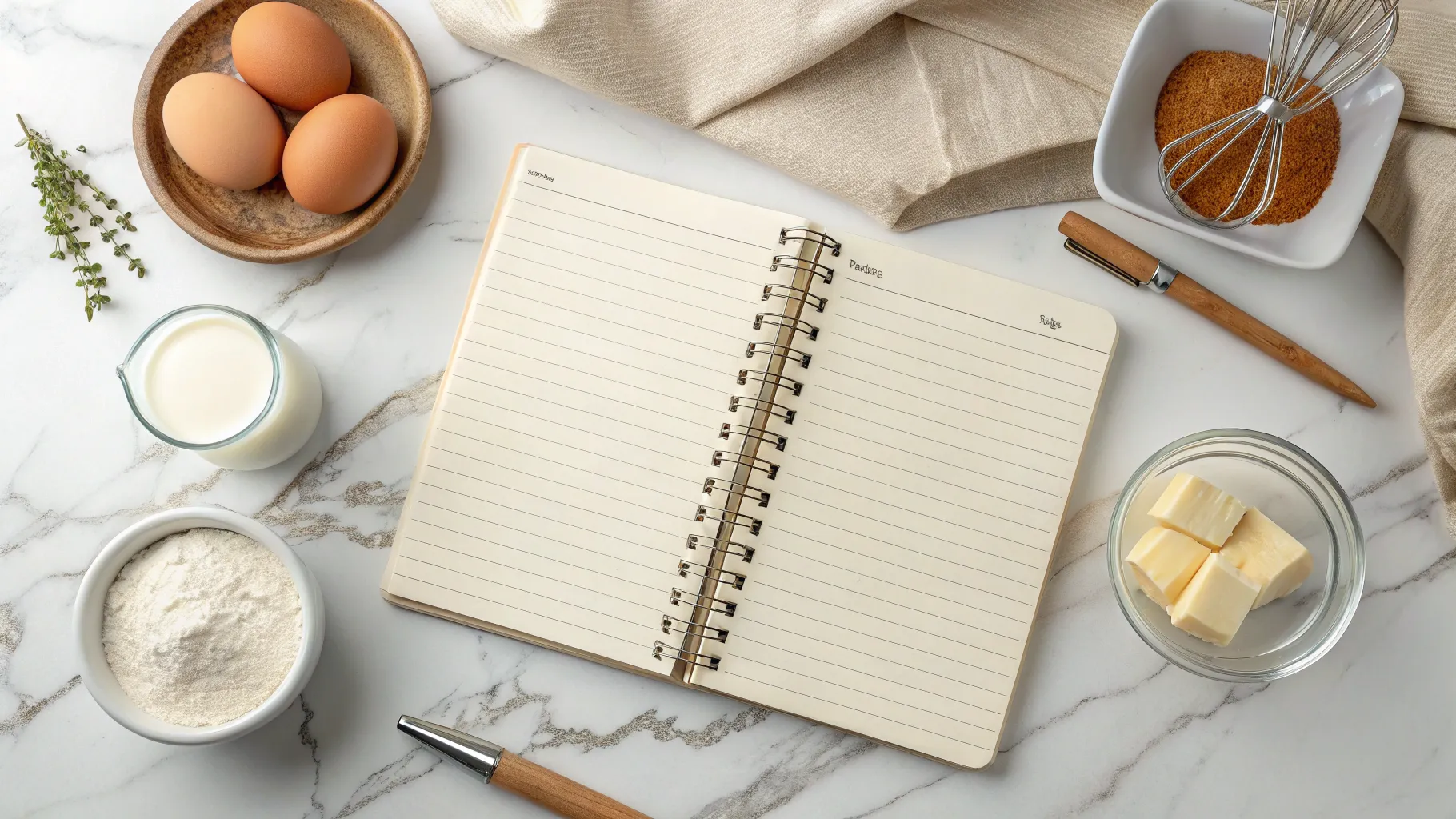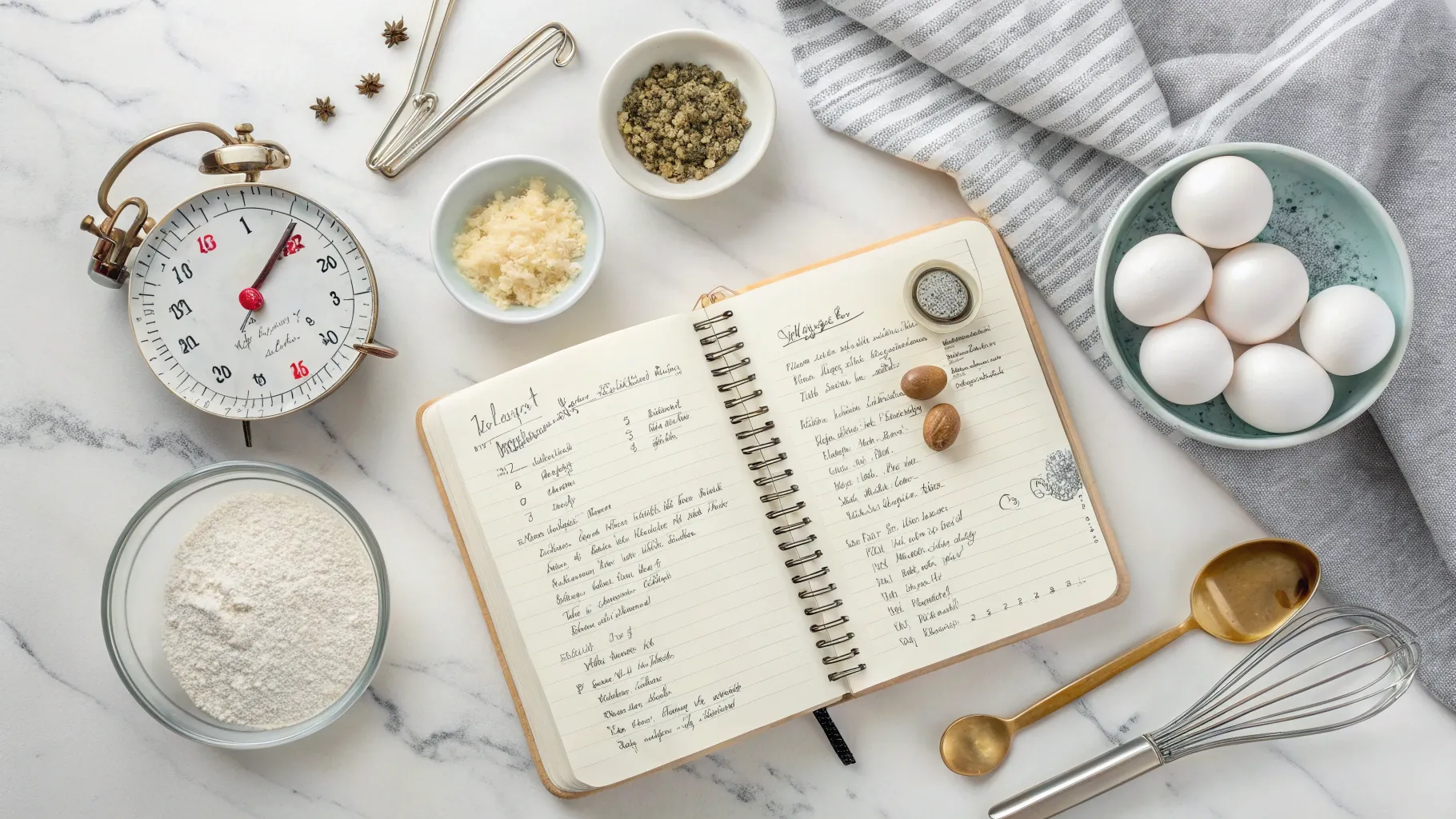Reading a recipe might seem straightforward, but for many beginners, it can feel like decoding a foreign language. From unfamiliar abbreviations to confusing instructions, one misstep can throw off an entire dish. Learning how to read and follow a recipe is a fundamental cooking skill that builds your confidence and ensures more consistent results in the kitchen.
If you’ve ever felt confused halfway through cooking a dish, don’t worry, you’re not alone. Understanding how to read and follow a recipe gets easier when you also know how to measure accurately and prep correctly. For help with quantities and conversions, check out Cooking Measurements Explained, and if you’re unsure when your dish is “done,” the Cooking Times & Doneness Guide has you covered.
Why Understanding a Recipe Matters
A recipe is more than just a list of ingredients and steps, it’s a blueprint for success in the kitchen. Yet, many beginner cooks overlook how crucial it is to fully understand a recipe before getting started. Taking the time to read and interpret it correctly sets the tone for the entire cooking experience.
Here’s why it truly matters:
-
You waste less food and time: Knowing exactly what you need, how to prep it, and when to use it helps you avoid last-minute surprises, unnecessary grocery runs, and throwing out misused ingredients.
-
You reduce kitchen stress and uncertainty: When you’re confident about each step and aware of what comes next, you can focus more on enjoying the process instead of feeling overwhelmed mid-recipe.
-
You improve accuracy and flavor in your meals: Understanding cooking terms, proper measurements, and sequencing ensures that your dishes turn out as intended — flavorful, well-cooked, and satisfying.
In short, reading a recipe thoroughly is like mapping your route before a road trip. It helps you stay on course, avoid detours, and arrive at your delicious destination with confidence.
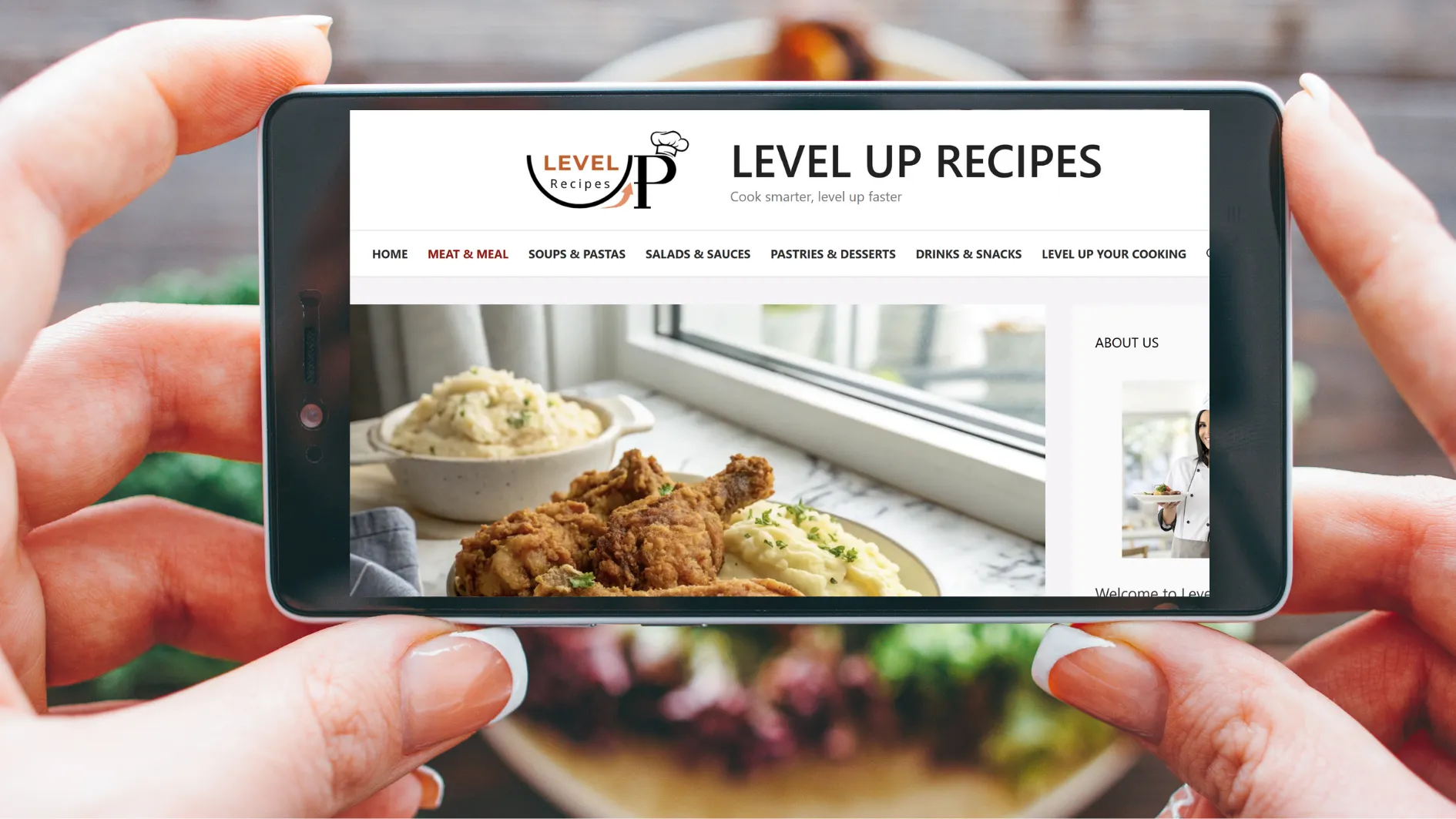
Anatomy of a Recipe: What to Look For
Most recipes are structured the same way. Get to know these parts so nothing takes you by surprise:
1. Title
The name of the dish and sometimes the style (e.g., “Easy Baked Ziti”).
2. Yield
Tells you how many servings the recipe makes, helpful for meal planning.
3. Time Estimates
- Prep Time: Time needed to prepare ingredients
- Cook Time: Time the dish is actively cooking
- Total Time: Prep + Cook + any resting or cooling time
4. Ingredient List
Ingredients are usually listed in the order they’ll be used. Quantities and sometimes notes (e.g., “chopped” or “softened”) will be included.
5. Instructions (Method)
Step-by-step guidance. Read all steps once before starting.
6. Notes or Tips
Extra suggestions, alternatives, or chef’s tips to improve the dish.
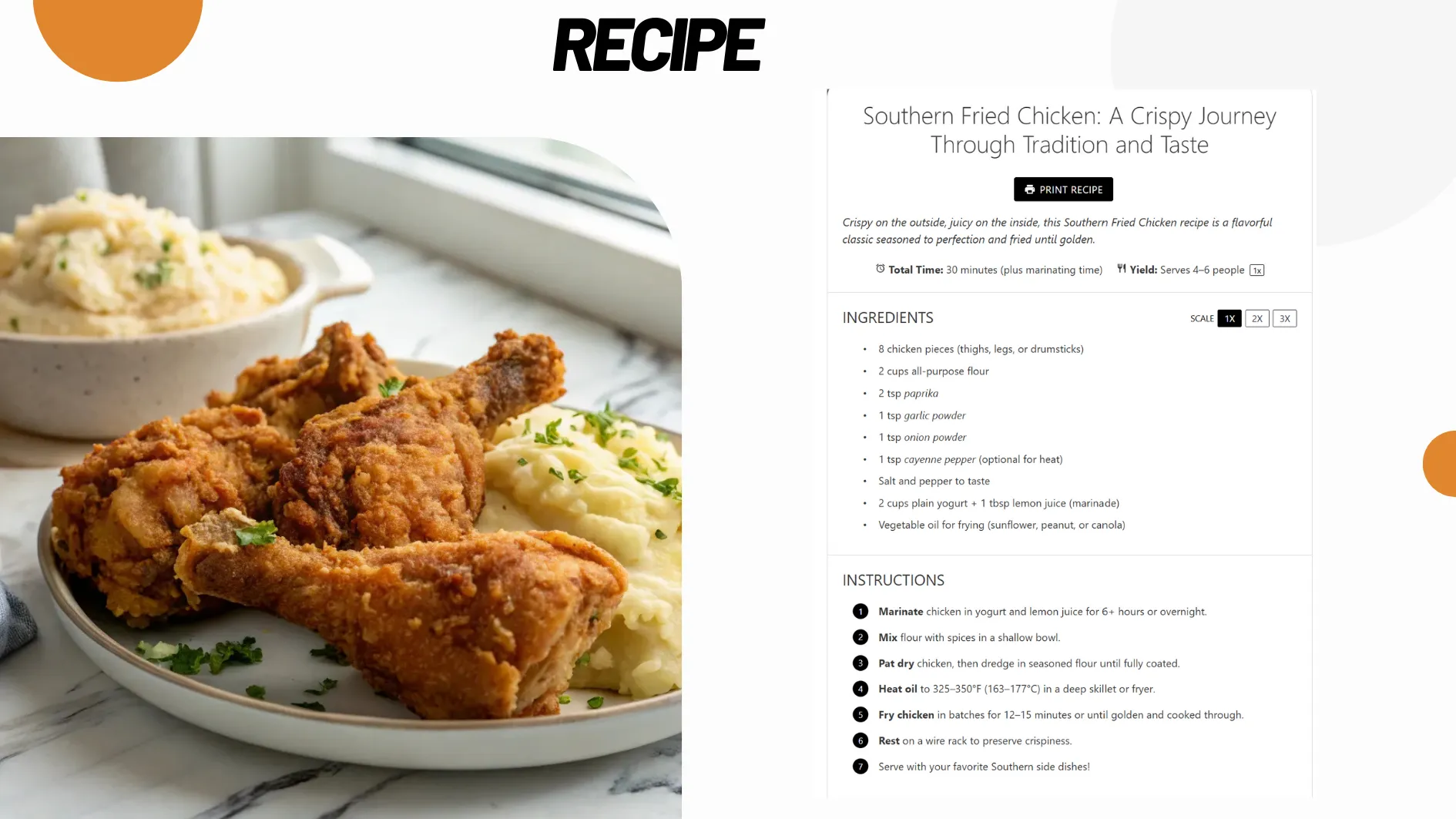
Before You Begin: Read Everything
Before you turn on the stove or reach for a pan, take a few minutes to fully read the recipe, from the title all the way to the final note. This simple habit can save you from mid-cooking surprises and set you up for a smooth, successful experience.
Here’s how to prepare like a pro:
-
🔍 Read the full recipe first
Don’t just glance at the ingredients and dive in. Carefully reading the instructions helps you understand the flow, identify tricky steps, and plan your timing. For example, you might discover that something needs to marinate for an hour or that the oven needs to be preheated right away. -
📚 Understand the terms
Recipes often include cooking terms that might not be familiar at first — like simmer, whisk, fold, or mince. Take a moment to look them up. Understanding these terms helps you avoid costly errors and builds your cooking vocabulary for future recipes. -
🧂 Check your pantry and tools
Go through the ingredient list and double-check your supplies. This is especially important for baking, where precise ingredients matter. Also, make sure you have the right tools (like a baking dish, grater, or kitchen thermometer). Running out of something mid-recipe can throw everything off. -
🔪 Prep first (mise en place)
Mise en place is a French term that means “everything in its place.” It’s a foundational habit for every confident cook. Chop your veggies, measure your spices, and portion out ingredients ahead of time so that when it’s time to cook, you can focus on the process rather than scrambling to prep while things are burning.
Preparing ahead of time doesn’t just make cooking easier, it makes it more enjoyable, organized, and way less stressful.
Ingredient Reading Tips
One of the most overlooked parts of a recipe is the ingredient list, and yet, it holds the key to success. Reading ingredient lines carefully can mean the difference between a dish that shines and one that flops. Here’s how to break it down like a pro:
1. Don’t skip the prep detail
Small words can make a big difference. For example:
- “1 cup walnuts, chopped” means you should measure 1 cup of whole walnuts first, then chop them.
- “1 cup chopped walnuts” means you should chop the walnuts first, then measure out 1 cup.
That small shift can totally affect a recipe’s texture, moisture, and even flavor balance, especially in baking, where precision is everything.
2. Mind the commas — they matter!
The comma in a recipe isn’t just grammatical, it changes meaning:
- “2 eggs, beaten” means take 2 whole eggs and beat them after measuring.
- “2 beaten eggs” means you need 2 eggs that have already been beaten and measured.
If you skip or misread punctuation, your results might not match the recipe’s intent.
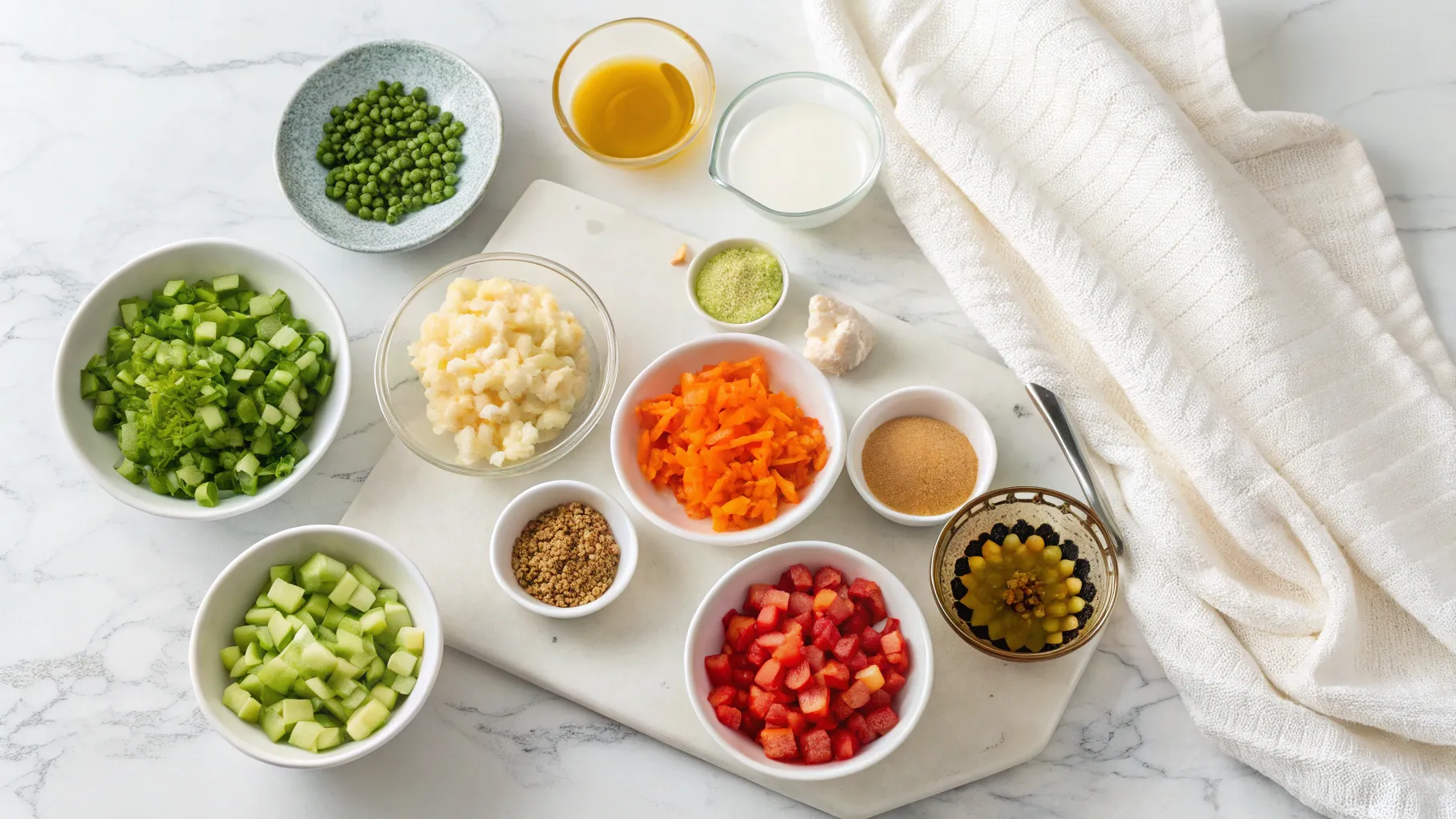
3. Understand your units
Teaspoons and tablespoons are not interchangeable:
- tsp = teaspoon = about 5 milliliters
- tbsp = tablespoon = about 15 milliliters
Adding 1 tablespoon of salt instead of 1 teaspoon could ruin a dish. If you’re unfamiliar with volume measurements, consider keeping a conversion chart nearby or using digital measuring tools to stay on track.
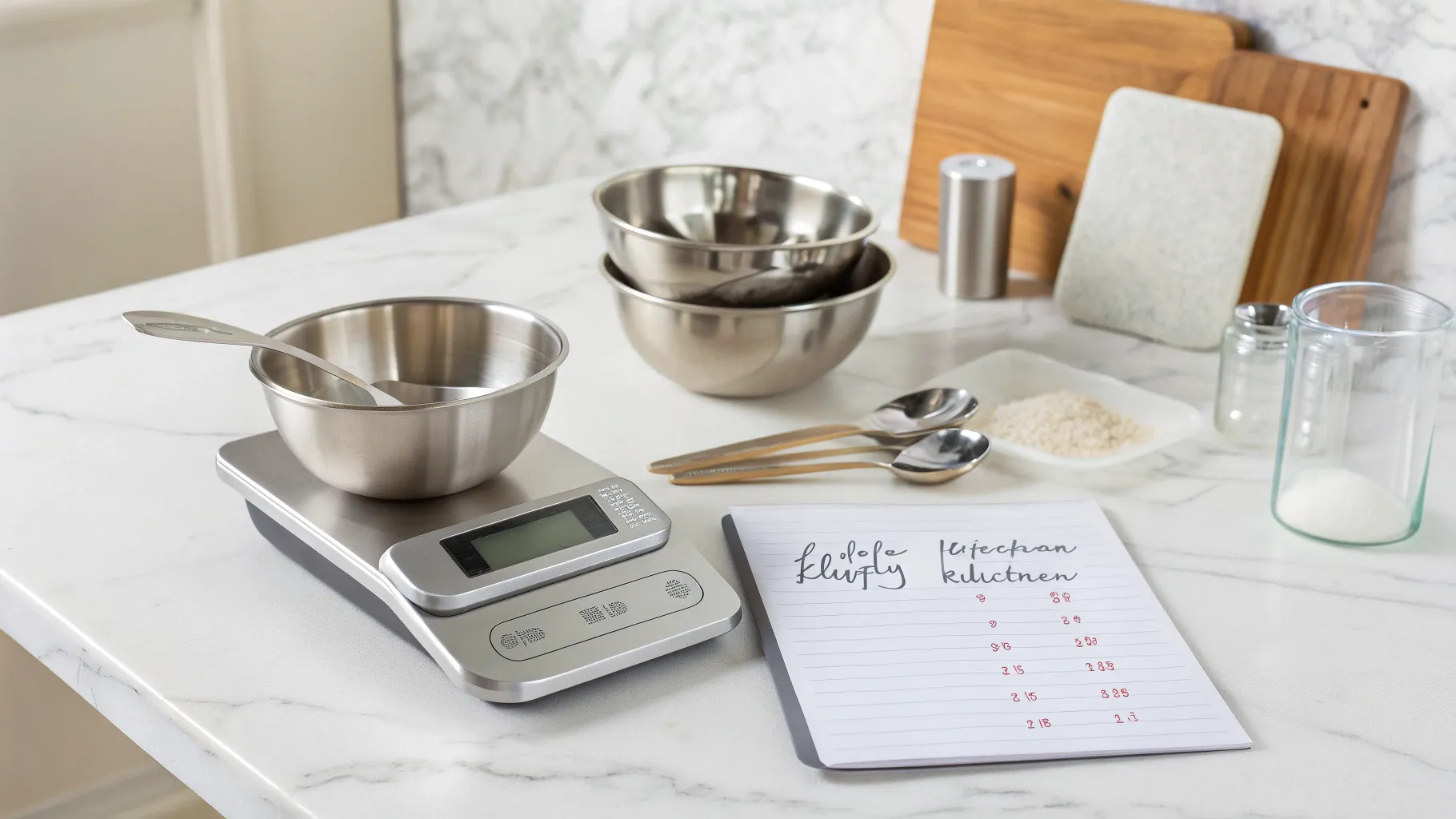
Follow the Instructions Like a Pro
Once you’ve gathered your ingredients and prepped your kitchen, it’s time to get cooking, but even with everything ready, how you follow the steps can make or break the final dish. Think of a recipe like choreography: skipping a step or rushing the rhythm can throw everything off.
Here’s how to follow instructions with skill and confidence:
1. Go step-by-step — no skipping!
It might be tempting to glance ahead or assume you know what’s coming next, but take it one instruction at a time. Recipes are usually written in a specific order for a reason — ingredients often need to be added in a particular sequence to develop flavor or achieve the right texture.
2. Clean as you go
Professional chefs swear by this practice, and you should too. Wipe down surfaces, rinse tools, and clear clutter while you cook. Not only does this keep your space tidy, but it also prevents accidents and makes the final cleanup way easier.
3. Watch for timing overlaps
Many recipes require multitasking, for example, boiling pasta while stirring sauce or roasting veggies while prepping dressing. Read ahead and identify these overlaps so you can manage your time efficiently without feeling rushed. Use timers or alarms to stay on track.
4. Don’t rush the process
Each step in a recipe serves a purpose, whether it’s browning onions to build flavor or letting dough rest to develop structure. Skipping or speeding through these details can lead to uneven results. Trust the method, even if it feels slow at first. With practice, it’ll become second nature.
Common Mistakes to Avoid
Even experienced home cooks fall into traps that can ruin a recipe. If you’re just starting out, being aware of these common mistakes can help you avoid frustration and build confidence in the kitchen. Here are the most frequent slip-ups, and how to prevent them:
1. Skimming the recipe instead of reading fully
It’s tempting to jump straight to cooking, especially when you’re hungry. But not reading the full recipe ahead of time is one of the easiest ways to miss crucial steps or misunderstand the order of operations. Always take a few minutes to read from top to bottom before doing anything, this helps you plan, prep, and avoid mid-recipe surprises.
2. Swapping ingredients without checking if it works
Ingredient substitutions aren’t always one-to-one. For example, swapping baking powder for baking soda (or vice versa) without adjusting the rest of the recipe can drastically change the outcome. If you’re going to substitute something, especially in baking, take time to research or consult a reliable source to make sure it won’t affect the chemistry or flavor of the dish.
3. Ignoring details like pan size or preheating
Instructions like “use an 8×8 pan” or “preheat oven to 375°F” may seem minor, but they matter. Using the wrong pan size can change the cooking time and affect how evenly things bake or cook. Not preheating your oven or skillet can lead to undercooked centers or soggy textures. Always follow these details closely, they’re part of the science behind the recipe’s success.
4. Not tasting as you go
Tasting your food as you cook is a habit of every great cook. Whether you’re adjusting seasoning, checking doneness, or tweaking spice levels, tasting helps you stay in control of the final flavor. Don’t wait until the dish is done to realize it needs salt, more herbs, or extra time.
Practice Makes Progress
The more recipes you read, the better you’ll get. Start with beginner-friendly dishes and gradually try more complex ones.
Keep a notebook or app to track what works (and what doesn’t), and don’t forget to enjoy the learning process. With time, you’ll be able to cook confidently, even without a recipe!
💡 Enjoyed this post?
Follow us for daily kitchen tips and tasty inspiration!
📌 Pinterest | 📘 Facebook | 📸 Instagram
